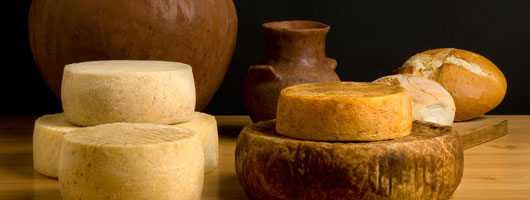The fiestas of the Patron Saint, San Mateo, are celebrated on the 21st of September. The municipality becomes one big party for a few days, attracting people from all over the island for the pilgrimage-offering. They also organise a horse race and a major livestock fair.
The first Sunday in July is the Fiesta del Agricultor (Farmer’s Fiesta). This fiesta is highly popular in the municipality, with exhibitions of typical farming activities for people to see what was done and how it was done, like "ordeñá" (milking) cows and how horses were used for threshing. All of these activities are accompanied by folk music and dancing, giving the fiesta a colourful atmosphere.
In the month of June, the municipality celebrates the "Fiesta de los Indianos", in Las Lagunetas. The origin of this festival lies in the emigration of many Canary Islanders to Cuba.
The history of Vega de San Mateo started a mere 200 years ago. The forestry wealth of the municipality and its favourable geographic characteristics for rearing livestock attracted the aboriginal inhabitants of the island to settle the district.

After the conquest of Gran Canaria, the land was shared out among the settlers. The present territory of San Mateo, or Tinamar as the abrorigines called it, formed part of what was known as La Vega, which encompassed what are now the municpalities of San Mateo and Santa Brigida.
So, this large district called La Vega was divided into three parts, La Vega de Arriba, roughly what is now San Mateo (Tinamar), La Vega de en Medio, which is the area of El Madroñal, and finally, La Vega de Abajo, which is the present municpality of Santa Brigida. In the 18th century, La Vega Alta witnessed a growth in population. But the roads were in a terrible state and it was a long way to get to the Parish church of La Vega, so the local inhabitants asked to have their own church built. Having obtained permission, a chapel was built in the estate of Vega de Arriba, dedicated to the worship of San Mateo, and this chapel became a parish in 1800. This was the first step on the road to attaining municipality status, as has happened in most cases on the island.
Having gained religious independence with the parish, the residents of San Mateo started the process of gaining total independence from the neighbouring Santa Brigida. So, at the beginning of the 19th century, the Court decided to separate San Mateo from the jurisdiction of La Vega. At this time, San Mateo had an average of 600 houses and the economy was still founded on farming, livestock and the wealth of its subterranean water resources. This situation remained stable until the 20th century, when economic changes occurred, causing a crisis in the primary sector and the growth of the tertiary sector, to a large extent because of people moving away from the countryside and investing their capital in industries other than farming and livestock.
The municipality of San Mateo is situated in the centre of Gran Canaria, 22 kilometres from the capital. It is surrounded by Valleseco, Tejeda, Santa Brigida, Valsequillo and San Bartolome de Tirajana. It covers an area of 37.89 square kilometres, and 47% of the land is the Las Cumbres Protected Area. This is set at 800 metres above sea level, up to the Central Massif, where the island’s highest peaks are: Pico de Las Nieves, at 1961 metres, Los Pechos, at 1,945 m., and Roque Saucillo, at 1,850 metres. The highest zone of the area, La Cumbre, is defined by the head of the Guiniguada Ravine, La Higuera Ravine and the La Mina Ravine, which, together with the altitude at this spot, make it an outstandingly beautiful and varied landscape.

La Mina Ravine crosses the island of Gran Canaria, running north east down to the island capital. La Mina contains a small stream of water thanks to the connection that was established centuries ago from the Tejeda catchment basin to the Guiniguada basin through a gallery cut through the mountain, which is why it is called "La Mina" (The Mine, in Spanish).
The broken terrain of San Mateo and the excellent climatic conditions for farming have endowed the area with one of the most beautiful natural landscapes of lush vegetation on the island.
La Vega de San Mateo is a municipality with a deep-rooted farming and livestock tradition, due to the geographic and climatic conditions that have made the land so fertile. Together with these factors, there was also an extensive network of small gullies that guaranteed a water supply for the whole area.

The farms are small, the fruit of working directly on the land, part time farming and the proliferation of herds of goats. In this sense, San Mateo has typically been one of the places where some of the most popular cheeses of the island are made.
Farming is no-where near as important as it used to be, as the services sector and the construction industry provide the largest proportion of jobs in the municipality.